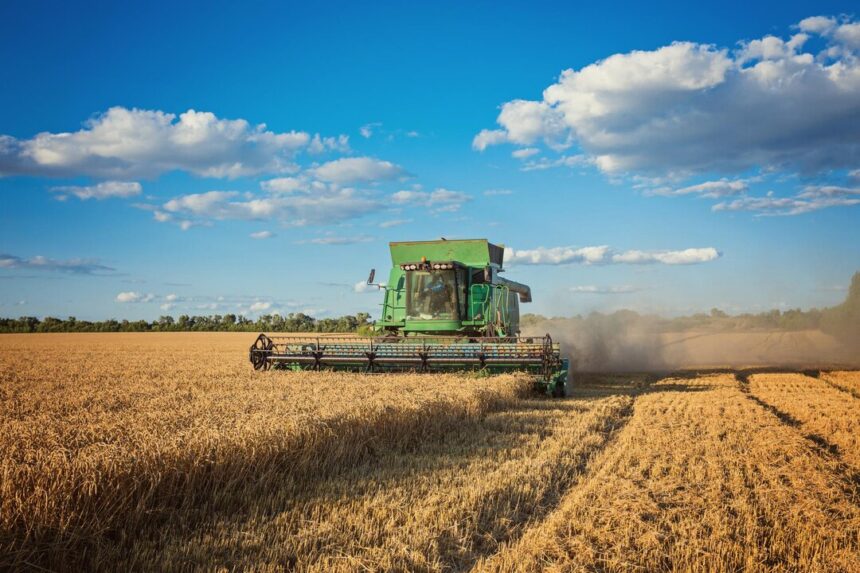Harvesting is the culmination of months of hard work and dedication in the agricultural cycle. It’s a critical stage where crops are carefully gathered, ensuring optimal yield, quality, and storage for future use or sale. Whether you’re a seasoned farmer or just starting, having a comprehensive understanding of harvesting techniques is essential for maximizing your crop’s potential. In this ultimate guide, we’ll explore tips and techniques to help you navigate the harvest season successfully.
- Timing Is Key:
Timing plays a crucial role in harvesting. Each crop has its own ideal harvest window, which depends on factors such as maturity, weather conditions, and intended use. Monitor your crops closely and harvest them at the peak of ripeness to ensure the best flavor, texture, and nutritional value. - Prepare Equipment:
Before you begin harvesting, ensure that all your equipment is in good working condition. From tractors and harvesters to hand tools and containers, having the right equipment on hand will make the process more efficient and productive. Regular maintenance and inspections are essential to prevent breakdowns and delays during harvest. - Harvesting Techniques:
The harvesting technique varies depending on the crop type. For example:
- For leafy greens and herbs, use sharp shears or knives to cut the leaves just above the soil level.
- For root vegetables like carrots and potatoes, gently loosen the soil around the plants and lift them out by hand or using a fork.
- For fruits such as apples and berries, carefully pick them from the stem or vine, taking care not to damage the fruit or plant.
- Handle with Care:
Handle harvested crops with care to minimize damage and bruising. Rough handling can reduce shelf life and quality, affecting marketability and profitability. Use appropriate containers or bins to transport crops, and avoid stacking them too high to prevent crushing or compression. - Post-Harvest Handling:
Once harvested, it’s essential to handle crops properly to maintain freshness and quality. Depending on the crop type, post-harvest handling techniques may include cleaning, sorting, grading, and packaging. Remove any debris or damaged produce, sort crops according to size and quality, and package them in suitable containers for storage or transportation. - Storage and Preservation:
Proper storage and preservation are critical for prolonging the shelf life of harvested crops. Depending on the crop type, storage conditions may vary. Some crops require cool, dry conditions, while others may need refrigeration or controlled atmosphere storage. Additionally, consider options for preserving surplus crops through techniques such as canning, freezing, drying, or pickling. - Safety First:
Harvesting can be physically demanding work, so prioritize safety at all times. Wear appropriate clothing and protective gear, such as gloves, boots, and hats, to protect yourself from sharp tools, thorns, and adverse weather conditions. Stay hydrated, take regular breaks, and avoid overexertion to prevent injuries and accidents. - Plan for Succession:
As you harvest your crops, start planning for succession planting to ensure a continuous supply of fresh produce throughout the growing season. Clear harvested beds, amend the soil as needed, and plant new crops or cover crops to replenish nutrients and maintain soil health. - Monitor and Evaluate:
Throughout the harvest season, monitor crop yields, quality, and market conditions. Keep detailed records of harvest dates, quantities, and sales to track performance and identify areas for improvement. Evaluate your harvest techniques and make adjustments as needed to optimize productivity and profitability. - Celebrate Your Success:
Finally, take time to celebrate your hard work and success. Harvesting is a rewarding culmination of your efforts, and it’s essential to acknowledge and appreciate the fruits of your labor. Share your harvest with family, friends, and community members, and take pride in contributing to local food security and sustainability.
Harvesting your crops is a crucial step in the agricultural process, requiring careful planning, preparation, and execution. By following the tips and techniques outlined in this ultimate guide, you can ensure a successful harvest season, maximize crop yield and quality, and enjoy the fruits of your labor for months to come. Happy harvesting!
Join 'Farmers Mag' WhatsApp Channel
Get the latest Farming news and tips delivered straight to your WhatsApp
CLICK HERE TO JOIN






